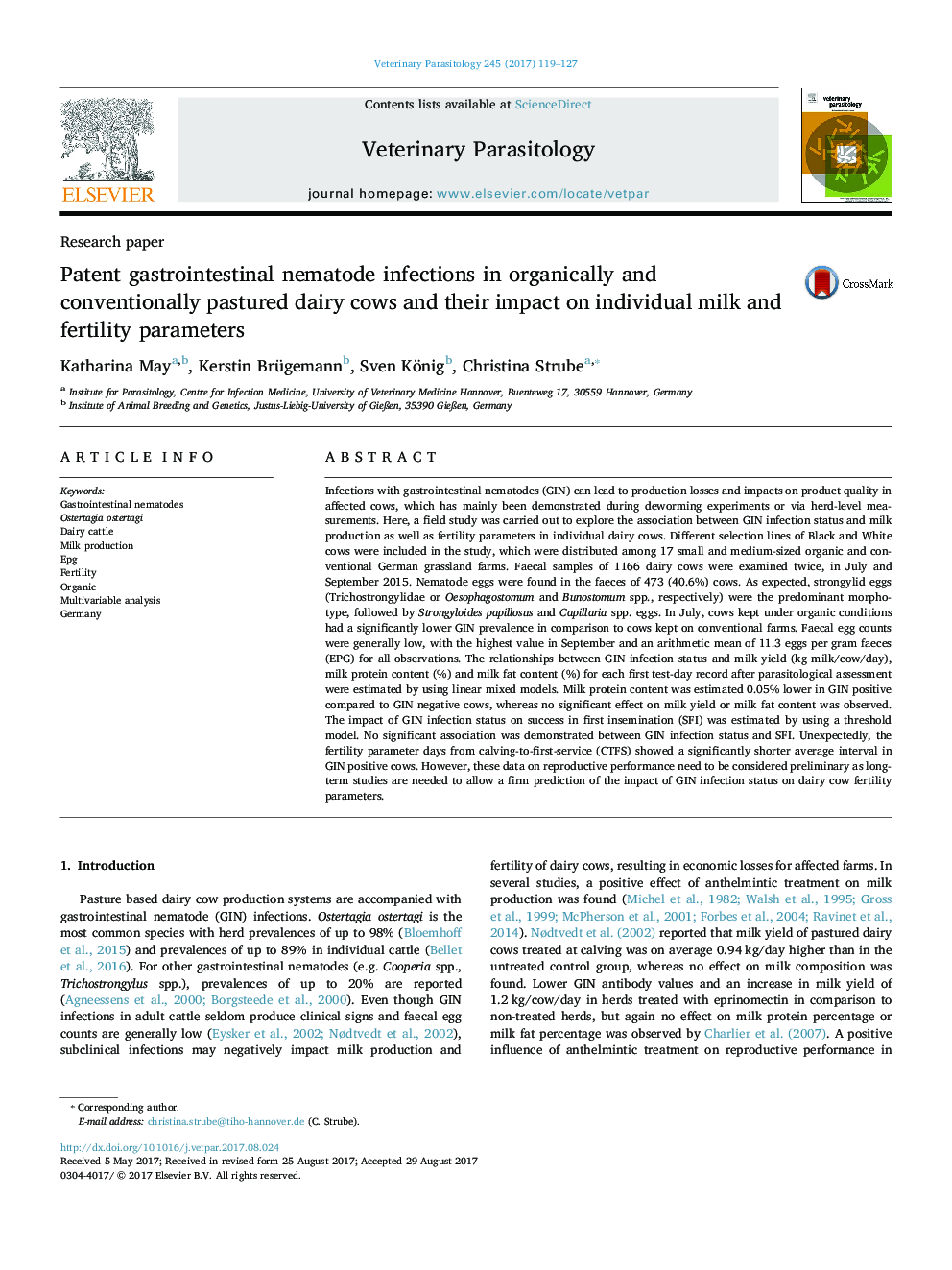| کد مقاله | کد نشریه | سال انتشار | مقاله انگلیسی | نسخه تمام متن |
|---|---|---|---|---|
| 5545685 | 1555631 | 2017 | 9 صفحه PDF | دانلود رایگان |
- Gastrointestinal nematode (GIN) infections in adult dairy cows were investigated.
- Organic and conventional farms were compared.
- The impact of GIN infection on individual production parameter was assessed.
- GIN infections leads to lower milk protein content.
Infections with gastrointestinal nematodes (GIN) can lead to production losses and impacts on product quality in affected cows, which has mainly been demonstrated during deworming experiments or via herd-level measurements. Here, a field study was carried out to explore the association between GIN infection status and milk production as well as fertility parameters in individual dairy cows. Different selection lines of Black and White cows were included in the study, which were distributed among 17 small and medium-sized organic and conventional German grassland farms. Faecal samples of 1166 dairy cows were examined twice, in July and September 2015. Nematode eggs were found in the faeces of 473 (40.6%) cows. As expected, strongylid eggs (Trichostrongylidae or Oesophagostomum and Bunostomum spp., respectively) were the predominant morphotype, followed by Strongyloides papillosus and Capillaria spp. eggs. In July, cows kept under organic conditions had a significantly lower GIN prevalence in comparison to cows kept on conventional farms. Faecal egg counts were generally low, with the highest value in September and an arithmetic mean of 11.3 eggs per gram faeces (EPG) for all observations. The relationships between GIN infection status and milk yield (kg milk/cow/day), milk protein content (%) and milk fat content (%) for each first test-day record after parasitological assessment were estimated by using linear mixed models. Milk protein content was estimated 0.05% lower in GIN positive compared to GIN negative cows, whereas no significant effect on milk yield or milk fat content was observed. The impact of GIN infection status on success in first insemination (SFI) was estimated by using a threshold model. No significant association was demonstrated between GIN infection status and SFI. Unexpectedly, the fertility parameter days from calving-to-first-service (CTFS) showed a significantly shorter average interval in GIN positive cows. However, these data on reproductive performance need to be considered preliminary as long-term studies are needed to allow a firm prediction of the impact of GIN infection status on dairy cow fertility parameters.
Journal: Veterinary Parasitology - Volume 245, 15 October 2017, Pages 119-127
